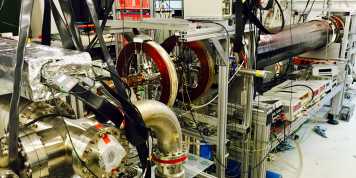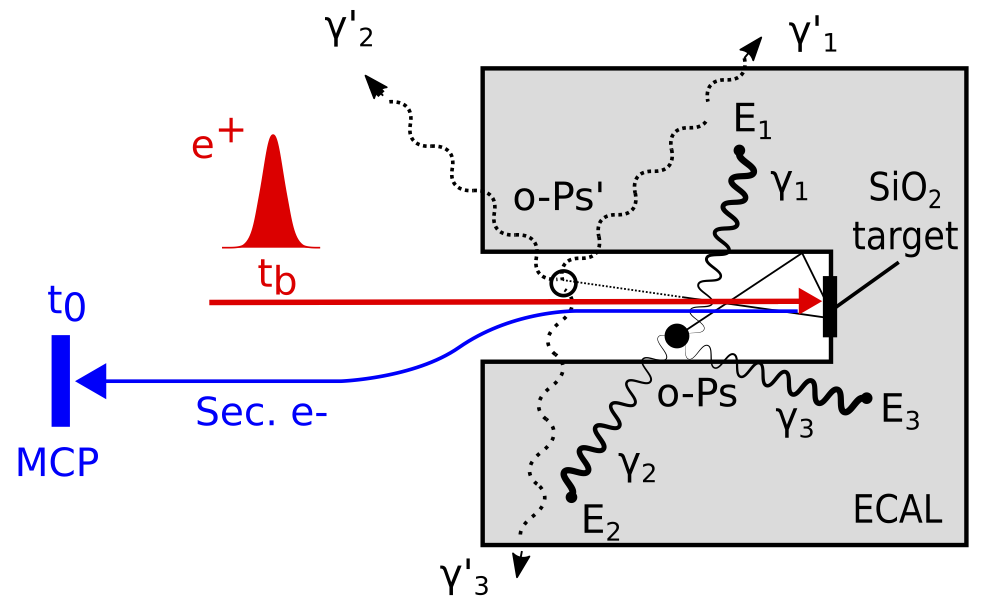Positronium Decays show no evidence of massless Mirror Dark Photons
The origin of the violation of parity symmetry in weak interactions is still a great mystery. Could there be a Mirror world of ours such that overall parity is conserved in Nature? Using our unique positron infrastructure at ETHZ to create positronium, we have searched for its disappearance into its Mirror state. With extremely high sensitivity, we could exclude this process by an order of magnitude compared to previously existing studies. The search for Mirror Matter has been pushed further!

Positrons from our beam impinging on a porous silica target produce positronium emitted into vacuum. The target is surrounded by 91 bismuth germanium oxide (BGO) crystals forming a highly hermetic calorimeter. When positrons hit the target, secondary electrons (SEs) are released. The SEs are guided to a microchannel plate (MCP), providing the tagging of the positron arrival at the target. A 3 microsecond window is open to acquire the energy deposited in the calorimeter. An event is considered to be zero-energy compatible when each individual crystal k measures an energy below a threshold.
No excess of zero-energy compatible events out of 2 × 108 tagged positrons were observed above the expected background extracted from the data.
This sets an upper limit for the branching ratio of this process of 3.0 × 10−5 (90% C.L.).
These results have been published in Phys. Rev. Lett. (external pageherecall_made)

